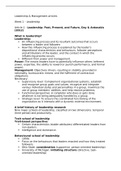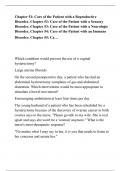Samenvatting
In-depth articles Summary Leadership & Management (6012S0051Y)
All articles from the Leadership & Management course (6012S0051Y) from the BA pre-master program. Week 1 – Leadership Article 1: Leadership: Past, Present, and Future, Day & Antonakis (2012) Article 2: The Forgotten Ones? The Validity of Consideration and Initiating Structure in Leadership...
[Meer zien]






